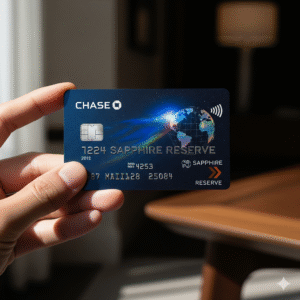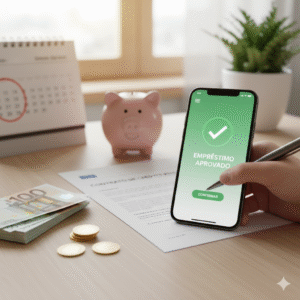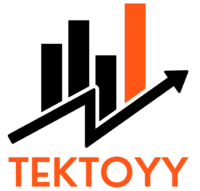Credit card debt can feel like a heavyweight on your shoulders. It’s a constant source of stress, a drain on your income, and a significant roadblock to achieving your financial goals, whether that’s saving for a down payment, investing for retirement, or simply living with less anxiety. The high, compounding interest rates are designed to keep you in a cycle of minimum payments that barely make a dent in the principal.
But here is the most important thing you need to know: you can break free. Paying off your credit card debt is not only possible, but with the right strategy and discipline, you can do it much faster than you think.
This is not a guide about quick fixes or unrealistic promises. This is a comprehensive, step-by-step playbook for systematically attacking your debt, regaining control of your finances, and building a more secure future. Let’s get started.
The Critical First Step: Stop Accumulating New Debt

Before you can start draining the tub, you have to turn off the faucet. It is mathematically impossible to make progress on your existing debt if you are simultaneously adding to it. This is the hardest, but most crucial, first step. It requires a conscious shift in your spending habits.
Actionable Steps to Take Immediately:
- Switch to Cash or Debit: Physically remove your credit cards from your wallet. For the time being, commit to using a debit card or cash for all your purchases. This forces you to only spend money you actually have.
- Delete Saved Card Information: Go through your online shopping accounts (Amazon, Walmart, food delivery apps) and delete your saved credit card details. This adds a layer of friction, making impulse buys less likely.
- Unsubscribe from Marketing Emails: Remove the temptation. Unsubscribe from retail newsletters and marketing emails that entice you to spend.
This initial phase is about stopping the “debt bleed” so that every dollar you put towards your plan actually moves you forward.
Face the Numbers: How to Tally Up Your Total Debt
You cannot fight an enemy you don’t understand. The next step is to get a crystal-clear picture of exactly what you owe. This can be intimidating, but knowledge is power. Grab a notebook or open a spreadsheet and make a list of all your credit card debts.
For each card, you need to list the following:
- Card Name: (e.g., Capital One Quicksilver)
- Total Balance: The total amount you owe on that card.
- Annual Percentage Rate (APR): The interest rate you are being charged. This is the most important number on the list.
- Minimum Monthly Payment: The minimum amount required by the lender each month.
Your completed list might look something like this:
| Card Name | Total Balance | APR | Minimum Payment |
| Chase Freedom Flex | $4,500 | 21.99% | $110 |
| Discover it Cash Back | $1,200 | 18.24% | $40 |
| Store Credit Card | $850 | 26.99% | $35 |
Seeing the total amount can be a shock, but now you have a concrete, organized view of your battlefield. This list is the foundation for your attack plan.
Choose Your Weapon: The Debt Avalanche vs. The Debt Snowball Method
Now that you know what you’re up against, you need a proven strategy. The two most effective and popular methods for paying off debt are the Debt Avalanche and the Debt Snowball.
The Debt Avalanche (The Mathematical Approach)
With the Debt Avalanche method, you focus on paying off the debt with the highest APR first, regardless of the balance. You continue to make minimum payments on all your other cards, but you throw every extra dollar you have at the card with the highest interest rate.
How it works:
- Order your debt list from the highest APR to the lowest.
- Make minimum payments on all debts except the one at the top of the list.
- Pay as much extra as you possibly can on that top-priority, high-interest debt.
- Once that debt is paid off, you “avalanche” that entire payment (the minimum plus all the extra you were paying) onto the card with the next-highest APR.
- Repeat until you are debt-free.
Pros: This is the most efficient method. By tackling the highest-interest debt first, you will pay less in total interest over the life of your debt, saving you the most money.
Cons: It can sometimes feel like a slow process. If your highest-APR card also has a very large balance, it might take a long time to pay it off, and you might not feel like you’re making progress.
The Debt Snowball (The Psychological Approach)
The Debt Snowball method, popularized by financial guru Dave Ramsey, focuses on paying off the debt with the smallest balance first, regardless of the interest rate.
How it works:
- Order your debt list from the smallest balance to the largest.
- Make minimum payments on all debts except the one at the top of the list (the smallest one).
- Pay as much extra as you possibly can on that smallest debt.
- Once that debt is paid off, you get a quick, motivating win! You then “snowball” its payment (the minimum plus the extra) and add it to the payment for the next-smallest debt.
- Repeat, and watch your “snowball” of a payment grow larger and larger as it knocks out each debt.
Pros: This method is incredibly motivating. Scoring those quick wins by paying off smaller debts builds momentum and keeps you engaged in the process.
Cons: You will likely pay more in total interest compared to the Avalanche method, because you might be leaving a high-interest debt to grow while you focus on smaller ones.
Which one is right for you? If you are a numbers-driven person who wants the most mathematically optimal path, choose the Debt Avalanche. If you know you are motivated by quick wins and need to see progress to stay on track, choose the Debt Snowball. The best plan is the one you will actually stick with.
Unleash Your Cash Flow: Finding Extra Money to Pay Down Debt

To accelerate your payoff, you need to pay more than the minimums. This extra money has to come from somewhere. It’s time to analyze your budget and find ways to increase the gap between your income and your expenses.
1. Conduct a Brutal Budget Audit:
- Track Everything: For one month, track every single dollar you spend. Use an app or a simple notebook.
- Scrutinize Subscriptions: Are you really using that gym membership, those four streaming services, and that monthly subscription box? Cancel everything you don’t absolutely need.
- Slash Discretionary Spending: This is a temporary sacrifice. Cut back significantly on dining out, coffee shop runs, entertainment, and shopping for non-essentials.
- Reduce Fixed Bills: Call your cell phone, internet, and car insurance providers. Ask for a better rate or see if there are any promotional plans you can switch to.
2. Increase Your Income:
- Ask for a Raise: If you’ve been excelling at work, build a case for your value and ask for a pay increase.
- Find a Side Hustle: The gig economy offers endless opportunities. Drive for a rideshare service, deliver food, do freelance work online, pet-sit, or tutor. Dedicate all earnings from your side hustle directly to your debt.
- Sell Unused Items: Go through your home and sell electronics, furniture, clothing, and other items you no longer need on platforms like Facebook Marketplace or eBay.
Every extra dollar you find and apply to your debt principal is a dollar that won’t be accruing high interest next month.
Supercharge Your Payoff: Using Balance Transfer Cards Strategically
If you have a good credit score (typically 670 or higher), a balance transfer credit card can be a powerful tool. These cards offer a 0% introductory APR for a promotional period, usually 12 to 21 months.
How it works: You transfer your high-interest balances from your existing cards to the new card. During the introductory period, your entire payment goes toward the principal because you aren’t being charged interest. This can save you hundreds or even thousands of dollars and allow you to make huge progress.
Critical Things to Know:
- There’s a Fee: You will almost always pay a one-time balance transfer fee, typically 3% to 5% of the amount transferred.
- The Clock is Ticking: You must have a disciplined plan to pay off as much of the balance as possible before the 0% APR period ends. Afterward, the interest rate will jump to a much higher variable rate.
- Don’t Use the Card for New Purchases: Use the card for the balance transfer only. New purchases may not be covered by the 0% APR and will complicate your payoff plan.
Should You Consider a Debt Consolidation Loan?

Another option is to take out a personal loan from a bank or credit union to pay off all your credit cards at once. This is known as debt consolidation.
The Pros:
- One Simple Payment: You replace multiple due dates with one predictable monthly payment.
- Lower Interest Rate: Personal loans typically have much lower fixed interest rates than credit cards, saving you money.
- A Clear End Date: Unlike the revolving door of credit card debt, a loan has a set term (e.g., 3-5 years), so you know exactly when you will be debt-free.
The Cons:
- It Doesn’t Solve the Habit: You’ve paid off the cards, but they still have zero balances. If you haven’t addressed the spending habits that led to the debt, you risk running them up again while still having to pay back the loan.
- Requires Good Credit: Like balance transfer cards, you’ll need a good credit score to qualify for a loan with a favorable interest rate.
Your Journey to a Debt-Free Life Starts Now
Paying off credit card debt is a marathon, not a sprint. It requires focus, sacrifice, and a commitment to changing your financial habits. But the reward is immeasurable. Imagine a life without the stress of high-interest debt, where your money works for you, not for the credit card companies.
By stopping new spending, understanding your numbers, choosing a proven strategy, and dedicating every available dollar to your plan, you can and will achieve your goal. The feeling of making that final payment and finally being free is a powerful motivator. Your journey starts today.







